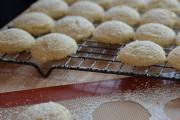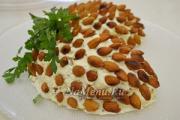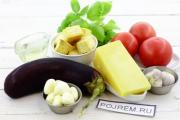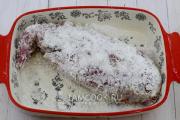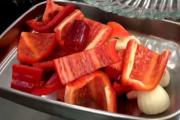How to make baby vegetable puree from zucchini. Zucchini recipes for children under one year old. Zucchini puree recipe
When the time comes for the baby to introduce adult food, young mothers ask themselves the question: “how to prepare zucchini for the baby’s first feeding.” Due to its beneficial qualities, pediatricians recommend introducing this vegetable first.
How and when can you start feeding your baby zucchini?
Doctors' recommendations have changed over the past decades regarding the age at which to start feeding infants. Previously, children started trying foods other than milk at 2 months because maternity leave ended earlier.
Currently, the view on introducing adult food to young children has been revised.
If the weight is below normal, doctors may allow feeding the baby after 4 months. In this case, porridge can also serve as the first adult food, as a product with a higher calorie content.
Zucchini is valuable because it contains the components necessary for proper nutrition. This is a dietary product that does not irritate the gastrointestinal tract and is easily absorbed by the body.
Useful properties of zucchini and its composition
 Nutritional value of 100 g of product:
Nutritional value of 100 g of product:
- calorie content: 24 kcal,
- water: 93 g,
- proteins: 0.6 g,
- fats: 0.3 g,
- carbohydrates: 4.6 g,
- dietary fiber: 1 g.
Zucchini contains:
Mineral salts | Microelements | Vitamins |
| potassium | molybdenum | provitamin A |
| magnesium | titanium | vitamin C |
| phosphorus | aluminum | B vitamins |
| calcium | lithium | nicotinic acid |
| sodium | zinc | |
| iron | ||
| sulfur |
5 rules for successful introduction of complementary foods
- Zucchini puree for complementary feeding should be prepared immediately before meals.. How to prepare zucchini for the first feeding of a baby will be described below.
- Zucchini is not an allergenic product, but all babies have their own individual characteristics of the body. Like any new product for a baby, this vegetable should be introduced carefully. Let's have it in the morning(for breakfast or lunch) so that you can observe the body’s reaction to the new product. You need to finish the meal with your usual food (breast milk or formula).
- The consistency of the finished dish should be liquid and homogeneous, because the baby is still just getting used to solid food and before that he was eating only milk.
- You need to start your first feeding with zucchini with ½ teaspoon of the finished product.
- If no negative changes in the child’s condition have occurred (loose stools, skin rash, bloating, etc.), you can continue to introduce a new product, increasing its amount daily. The portion should be increased until it replaces 1 feeding (150 g).
Give your child a zucchini dish once a day for breakfast.
Finish the meal with his usual food (breast milk or formula) until he is completely satisfied.
- On day 1 – 0.5 teaspoon of vegetable puree (3 g),
- Day 2 – 1 tsp. (8 g),
- Day 3 – 3 tsp. (20 g),
- Day 4 – 7 tsp. (40 g),
- Day 5 – 12 tsp. (70 g),
- on day 6 – 20 tsp. vegetable puree + 1 tsp. vegetable oil, which is added after the portion reaches 100 g (120 g),
- Day 7 – 27 tsp. vegetable puree + 1 tsp. vegetable oil (170 g).
How to choose and cook zucchini
When it comes to introducing adult food to babies, modern young mothers have an alternative: cook it themselves or buy ready-made ones.
In the latter case it is necessary carefully read the composition of the product and monitor the integrity of the packaging.
It is better to prepare food for babies yourself, so the mother will be confident in the composition of the product and its quality.
Of course, the ideal option is to grow vegetables yourself or entrust it to your grandmothers.
3 rules for choosing zucchini in a store
- You should choose a regular white-fruited variety of zucchini.
- It is advisable to take young fruits.
- On them there should be no damage: dents, cracks, etc.
5 steps for preparing zucchini for the winter
It is better to freeze zucchini grown in your own garden or from trusted farmersIn winter, you won’t find fresh young zucchini fruits in our stores, and even at an affordable price.
Therefore, for those who are going to prepare it for their little ones in winter, this Step by step instructions on how to freeze zucchini for complementary feeding:
- We choose good fruits according to the rules described above.
- Wash them, remove the peel and core with seeds.
- Cut into small cubes or rings.
- Place the pieces in a bag and flatten them so that they do not form a lump in the freezer.
- Place the bags in this form in the freezer.
5 steps for making zucchini puree for babies
Puree made from steamed zucchini is healthier than puree made from the same “brothers”. It’s not okay to dilute puree with milk.The first vegetable dish should consist only of vegetables and water without adding milk, salt, sugar, spices or fats.
The latter are added in the form of vegetable fats (vegetable oil, olive oil, etc.) when the portion reaches 100 g.
Having figured out which zucchini to choose and what to follow, now let’s look at the sequence of steps on how to prepare zucchini for the baby’s first feeding.
- Before preparing zucchini for the baby's first feeding, it must be thoroughly washed under cold running water, peeled and rinsed again.
- Next, you need to cut off the required amount of vegetable; in the first days you may need no more than 2 rings 1.5 cm wide.
- Then comes the heat treatment: cook the pieces in water or steam until tender, so that they are soft.
- Grind them until smooth using a sieve or blender.
- Add the broth (if boiled in water) or breast milk/boiled water (if steamed) so that the puree becomes liquid and the consistency is no thicker than kefir.
Slightly different from breastfeeding. We advise you to familiarize yourself with these subtleties in more detail.
You can find out how much a newborn should eat in the first days of the week of life.
Unfortunately, not all foods can be eaten by a mother after the baby is born. Read about the month, permitted and prohibited products at the link.
How to boil and steam zucchini
The dish will be much tastier and healthier if it is steamed..
This can be done using a slow cooker, steamer, or regular saucepan with a steamer insert or colander placed over the saucepan and covered with a lid.
Cooking steaming retains vitamins and microelements in the product.
When steaming vegetables, their flavor is not cooked out, so the taste of the finished dish will be richer and sweeter.
Therefore, if you want to somehow diversify your child’s menu, you can alternate these cooking methods.
However, cooking in water has its advantages. After cooking, a vegetable broth remains, which can be given to the baby as an additional drink or diluted with vegetable puree.
Subtleties of cooking technology
Cook the zucchini for no more than 10 minutes; the remaining broth can be diluted with the finished puree.How long to cook zucchini for first feeding?
- In water – no more than 10 minutes
- For a couple – 15-20 minutes.
How to cook zucchini for first feeding?
In the pan:
Place the fruit cut into medium pieces in a small saucepan and fill them with water so that it barely covers the pieces.
In the steamer:
In accordance with the instructions for the device, vegetables are laid out in an even layer in the steamer bowl in the “cooking vegetables” mode.
In the slow cooker:
Vegetables are placed in a special bowl for steaming in an even layer, the bowl is placed on a special stand in the multicooker.
In a steaming pan:
Pour some boiling water into the pan and place a steamer insert in the pan. There should be enough water so that it is just below the level of the steamer, - this way the vegetables will be steamed rather than boiled in water.
How we prepare zucchini for complementary feeding: reviews from parents
Maria, 26 years old, Moscow
Our son has always gained weight very well.
When he turned 6 months old, our local pediatrician said that it was time for us to introduce complementary foods. I recommended starting with vegetables; the first we had was zucchini.
So that the new item on his menu would not be a shock to my son, I diluted my zucchini puree with milk. I always ate everything with a bang!
At the beginning, when the portions were small, I ground the zucchini through a sieve, pressing on top with a large spoon. In the first days, 1-2 centimeter circles of zucchini were enough for me.
Anna, 30 years old, Kostomuksha
I have two small children 1 year and 9 months apart. I started feeding both of them with zucchini when they were 6.5 months old. We started later because we were vaccinated and got sick at the turn of 5 and 6 months.
With my eldest son, all this fuss with preparing a spoonful of puree seemed somewhat complicated to me, and then I found a store-bought puree from one manufacturer, which has the normal composition: only zucchini and water (other manufacturers contain milk in the composition).
With my youngest daughter, I, as an experienced mother, prepare food for complementary feeding myself. I buy a lot of zucchini during the season, freeze them and take the required amount out of the freezer before cooking. I steam them – it makes them tastier and sweeter.
I prepare it for 2 days: for today and tomorrow, I pour it into baby food jars, scalded with boiling water. I put the cooled jars in the refrigerator and simply reheat them before eating.
Veronica, 20 years old, Tomsk
We started eating zucchini at 5 months. I cooked the zucchini in a small saucepan. I made the puree in a blender with the resulting broth.
When they began to eat a decent portion, on the advice of the pediatrician, I added olive oil.
We were advised to wash down a full portion of vegetables with water, and when we start eating porridge, wash it down with milk.
conclusions
Zucchini is the best product to start introducing your baby to adult food. It's better to cook it yourself puree for the first feeding can only contain zucchini itself and water and/or breast milk.
It is imperative to achieve a liquid consistency and uniformity of the finished product. Complementary foods should be introduced in small amounts and be sure to carefully monitor the child’s condition.
This video clearly shows how to prepare the first complementary foods from fresh and frozen zucchini for a child.
In contact with
It is believed that mother’s milk contains all the complex of vitamins and substances necessary for the full development of the baby. Nevertheless, from six months, and in some cases a little earlier, pediatricians recommend gradually introducing complementary foods into the child’s diet. The ideal option would be zucchini puree.
Composition and beneficial properties
- An extremely healthy vegetable. It contains calcium, iron, magnesium and potassium. It also contains vitamins A, E, C, B, PP. In addition, the product is considered hypoallergenic and easily digestible. Zucchini puree prevents constipation, stimulates digestion, and does not cause bloating. And another advantage of this dish is that it is easy and quick to prepare.
Precautionary measures
When introducing a new product to a baby, it is not recommended to give more than one teaspoon of puree. It is very important that the baby does not have diathesis. If you have a cold, it is also better to stop feeding until the child recovers. Monitor your child’s body’s reaction to a new product in the diet; if you notice a rash or a change in his mood, then exclude purees from the children’s menu for a while.
How to make zucchini puree
Currently, there is a rich variety of zucchini puree on supermarket shelves. Dozens of manufacturers assure that their product is the most delicious and healthy. However, we all know that homemade is the best. To create this dish, you can use frozen zucchini, but it is preferable to use fresh vegetables, without damage or signs of rot. If the ingredients for the puree were purchased at the market or in a store, and not grown in your own garden, then they need to be soaked before cooking. Initially, the puree should be prepared exclusively from zucchini; after the baby’s body gets used to it, you can experiment with the taste of the puree and add other ingredients, such as butter, egg yolk, sugar, semolina, and herbs.
Recipe: zucchini puree for little ones
Wash 1/3 of the zucchini, peel and cut into small cubes. Boil in boiling water until soft (about 7-10 minutes). Grind the vegetables in a blender or pass through a sieve. Boil the resulting puree for a couple of minutes over moderate heat and cool. If desired, dilute the prepared zucchini puree with water. A tasty and healthy dish for your baby is ready!
If your baby is over a year old, then you can prepare zucchini puree with semolina for it. To prepare, you need to take 1/3 of the zucchini, a teaspoon of semolina, the same amount of sugar, 1 yolk and 1/2 cup of milk. Wash the zucchini, remove the skin and seeds and cut into small cubes. Combine milk, yolk, sugar and semolina, and pour the prepared mixture over the zucchini. It is recommended to cook the puree by steaming or in a water bath until soft. Afterwards, the finished mixture needs to be crushed in a blender. If desired, you can add a little butter.
Only some children are happy to eat puree made exclusively from zucchini. If your child is not one of these, we recommend preparing for him zucchini puree with potatoes. Wash, peel, chop and boil half a small zucchini and one medium-sized potato for a quarter of an hour. Grind the boiled vegetables in a blender along with the boiled egg yolk. Add a teaspoon of vegetable oil and 2 tablespoons of milk. Bring the mixture to a boil. Breakfast for the baby is ready! By the way, you can add not only potatoes to squash puree, but also pumpkin, apples, and bananas. The main thing is that your baby is not allergic to the components of the dish.
Zucchini is ideal for baby's first feeding. This is a valuable source of vitamins and minerals with a safe composition, which extremely rarely causes allergies or digestive disorders in infants. This is a low-calorie product that cleanses the body, removes toxins and excess fluid. In this article we will learn how to properly prepare zucchini puree for a baby, and how much healthy vegetable a baby can eat.

Do not introduce a new dish during teething if your baby is sick and not feeling well. It is not recommended to give complementary foods in too hot and stuffy weather, if the child is stressed due to moving, due to going to nursery, or due to separation from his mother.
Zucchini is ideal for first feeding. In addition, the recipe for preparing this vegetable is easy. For the first time, you can give your baby no more than half a teaspoon. Then carefully monitor the child’s reaction. Despite the hypoallergenic nature of the product, it can cause bowel problems in infants. If your stool is abnormal, postpone the introduction of zucchini as complementary foods for a month. Then try again.
Step 1: Prepare the zucchini.
Wash the zucchini and cut off the ends. If your vegetables are fresh and young, with thin skin, then you do not need to peel it, but if the zucchini has already been lying down and its peel has become rough, you need to remove it with a knife.Cut the washed and peeled vegetables into medium-thick slices. This is an important point because thin slices may fall apart during cooking, and thick ones will not cook through.
Step 2: Prepare the zucchini.

Pour cool water into a saucepan and place it over high heat to bring to a boil. Next, place a steaming rack on top of the pan and place the zucchini pieces in it. Make sure the water is boiling all the time. Cook the zucchini this way for about 10-12 minutes or until they become soft.
Step 3: Prepare the garlic.

Peel the garlic cloves and cut off the ends. Divide each into three to four parts so that the pieces are not too small and do not fry in the process.
Melt some butter in a frying pan and fry the chopped garlic cloves in it. Cook this ingredient just a little, just until it begins to turn golden brown and emit a fragrant smell.
Step 4: Prepare the puree.

Place steamed pieces of zucchini, fried garlic into a blender bowl, add salt and pepper to taste, and then pour in a little chicken broth. Important: Do not pour out all the broth at once, add it gradually so as not to make the puree too thick or, on the contrary, too thin. Mix all ingredients in a blender, turning the vegetables into a homogeneous mass. That's it, the puree is ready! Make sure you add enough spices to it and go serve your culinary creation on the dinner table.
Step 5: Serve the zucchini puree.

Serve the zucchini puree hot as a side dish, just as you would serve mashed potatoes. Enjoy a tasty and very healthy addition to the main dish, and then be surprised by the lightness that forms in your stomach after this wonderful dish.
Bon appetit!
This is a seasonal dish, which it is advisable to prepare from fresh zucchini, picked straight from the garden, if you have such an opportunity.
Zucchini puree can also be combined with cauliflower, potatoes or carrots. These vegetables also need to be steamed first, and then chopped together with the zucchini.
Zucchini puree is very useful for children, but you need to prepare this dish for your little gourmets with less garlic and ground black pepper or without them at all.
Probably, only the lazy in our time have not seen the recommendation that the first complementary foods should start with zucchini.
And so, the child has grown up and you also decided to start feeding your baby.
How to prepare zucchini for the first feeding, secrets of preparation, benefits of the product for the baby and possible contraindications - we’ll talk about this today.
The benefits of zucchini for a child
Why is this particular vegetable recommended for a child’s first introduction to foods?
- Zucchini practically does not cause allergies;
- Has a general strengthening property;
- Promotes good digestion;
- Strengthens intestinal perilstatics;
- Zucchini juice has a diuretic effect, which helps normalize the water-salt balance in the body;
- Potassium, which is found in its composition, is responsible for the normal rhythm of the heart and the balance of water in the child’s body. In addition, it has an excellent effect on the condition of nerve and muscle fibers, optimizes cerebral blood supply;
- Thanks to its beneficial substances, the product strengthens the baby's health. Zucchini contains many vitamins and microelements, such as potassium and phosphorus, magnesium and iron, as well as vitamins C and B:
- It is rich in copper and carotene, fiber and ascorbic acid.
In addition, zucchini:
- does not irritate the digestive system;
- well digested;
- removes excess fluid from the body;
Zucchini is a low-calorie vegetable; it can be chosen for first feeding if the child is overweight.
Porridge is more suitable for small children.
How and when to introduce zucchini into complementary foods
Everything, of course, greatly depends on the complementary feeding system you choose.
- In traditional complementary feeding, if you haven’t read anything else yet and only listened to a pediatrician about this, then zucchini is the first vegetable that your child will become familiar with;
- You should start introducing complementary foods to your baby no earlier than 6 months. This is a recommendation for an infant;
- It happens that the introduction of complementary foods can begin later if the child does not yet show his readiness for it.
For more information about the signs of readiness for complementary feeding, see the free online seminar, which can be subscribed to by clicking on the link Main mistakes when introducing complementary feeding >>>
How to introduce zucchini into complementary foods so as not to harm the baby and so that he likes it?
- The first time you need to give the child puree on the tip of a teaspoon;
- You can mix it with breast milk, but it is better to simply put the baby to the breast immediately after he swallows this portion of zucchini. The effect will be even more beneficial;
- Wait for the next day and look at the child’s reaction:
- Leather;
- Chair;
- Behavior
All these factors will show you whether you should give zucchini today or whether you need to pause in complementary feeding.
Regarding the volume of complementary foods, you can find the following information: if there is no negative reaction to the product, then the portion can be doubled. Then it is necessary to increase the amount of complementary feeding and bring it to 50-60 g per day, and at 7-8 months the child should already be eating 70 g. Closer to a year, reach 100 g.
It is not right.
We remember that the task of complementary feeding from 6 to 9 months is to introduce the child to various products, textures and check for allergenicity.
By giving a large amount of complementary foods at once, you will kill the child’s food interest and he will refuse any food.
I explain in more detail about all the mistakes of complementary feeding and how to introduce it correctly so as not to upset the child’s stomach and spoil the child’s appetite in the online course ABC of complementary feeding >>>.
Attention! If after the first spoonful of zucchini puree, the child has changes in his stool or a rash appears on the skin, then the product should be immediately discontinued and try giving it again in a few weeks.
There are certain rules for introducing complementary foods:
- the puree should only be from zucchini;
- first give puree, and then breast milk;
- the vegetable is cooked right before eating;
- it can simply be boiled, baked or steamed;
- It is better to give complementary foods in the morning;
- by consistency the puree should be liquid and room temperature;
- if the child does not want to eat, do not force it;
- if the baby does not feel well, then do not give the product on this day;
- If you notice an allergic reaction, temporarily postpone complementary feeding.
When should you not give puree to your child?
There is practically no allergy from a white vegetable, but you still need to be careful. Feeding zucchini should be stopped immediately if you notice in your child:
- bloating;
- rash and redness on the skin;
- anxiety;
- increased gas formation and stool disturbance.
If such signs occur, then your child is allergic to zucchini and you should immediately stop feeding.
Try introducing it again in a month.
Important! If you add other vegetables to the zucchini puree, it will be very difficult to understand what caused the allergic reaction.
If you bought the product at the market or in a store, prepared the puree yourself, and your baby developed a rash on the skin, then try making it from a different zucchini. The reaction may not be so much to the zucchini as to the chemicals it contains.
How to choose and cook zucchini?
In order for zucchini puree to be as safe and healthy as possible for babies, you need to choose the right vegetable when purchasing, then process and prepare it according to all the rules.
- To prepare vegetable complementary foods, you can take fresh or frozen zucchini;
- It is better to buy small fruits;
- Before cooking vegetables, they must be thoroughly washed;
- If the zucchini is not from your garden, but purchased in a store or market, then before cooking it needs to be kept in cold salted water for a while to remove any remaining nitrates;
- If your baby's complementary foods fall outside of zucchini season, try freezing fresh vegetables.
How to freeze zucchini for complementary feeding?
- First, wash the zucchini well and cut off the skin in a thin layer;
- remove the cap and stalk - they contain the most nitrates;
- cut the product into thin circles, approximately 3 cm thick;
- Place in a freezer bag in one layer.
There is no need to defrost vegetables before cooking; they are immediately thrown into boiling water or a double boiler. Frozen vegetables make mashed potatoes watery, but they are no less healthy than those made from fresh zucchini.
How to cook zucchini for first feeding?
- if the fruit is not young, then it is necessary to remove the seeds;
- the dishes where you will cook the puree need to be doused with boiling water;
- Zucchini should not be overcooked in order to retain as many nutrients as possible;
- the finished vegetable must be rubbed through a sieve or blended in a blender to obtain a homogeneous mass;
The last point greatly depends on the complementary feeding system. In pedagogical complementary feeding, we don’t puree anything for the baby, we give it a little, in microdoses. I explain more about this type of complementary feeding in the course “The ABCs of complementary feeding”, the link to which I gave above.
How many minutes does it take to cook baby zucchini?
Zucchini cooks very quickly, it will only take 7-10 minutes to be ready. You can cook in a pan, steam or in a slow cooker, and also bake in the oven. A little later, feel free to add other products to the zucchini.
Know! When the child grows up, you can combine this vegetable with protein (meat), fats (olive or vegetable oil), herbs and other vegetables.
Vegetable puree from zucchini for first feeding usually does not cause allergies or other problems in children; children accept it easily and well.
Properly introduced complementary foods will provide your baby with vitamins and nutrients and introduce him to adult food.

